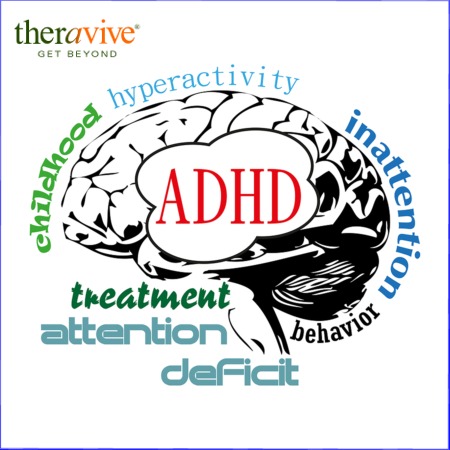With the surge of Attention Deficit Hyperactivity Disorder (ADHD) diagnoses over the past decade, many parents are likely to be skeptical when their child is initially diagnosed. Particularly in the African American community, where there is a historical cultural mistrust of medicine, diagnoses, and labeling, a diagnosis of ADHD is even more of a taboo. While parents should always make informed decisions about anything that involves their child, denying the child of effective and empirically validated treatment (which can be a pharmacological treatment) is borderline negligent.
What is Attention Deficit Hyperactivity Disorder (ADHD)
According to the National Institute of Mental Health (NIMH), Attention Deficit Hyperactivity Disorder is one of the most common childhood brain disorders and can continue through adolescence and adulthood. Symptoms can fall under one of three categories: 1) Inattentive, 2) Hyperactive, or 3) Impulsivity. Often children with inattentive symptoms are overlooked because they don't cause much of a disturbance in the school setting, while children with hyperactive or impulsive symptoms may be over-identified. Children with inattentive symptoms may daydream, lose things, appear disorganized, get bored easily, seem messy, and may seem to do things in slow motion. Children with hyperactive symptoms may seem as if they are run by a motor, talk nonstop, have difficulty doing quiet tasks or activities, run around touching everything in sight, or fidget and squirm when sitting. Children with impulsive symptoms usually get in the most trouble at school. They act without thinking, disrupt others, have difficulty waiting their turn, are easily frustrated, and may yell, scream, or show emotions without restraint (Jensen et al, 1997)
It should be noted that these behaviors should be identified in the context of what is developmentally appropriate. For example, all of the behaviors listed above may be seen in a three-year old child, and for a three year old, those behaviors are normal. However, when behaviors are in excess of what is appropriate for the developmental level, and they significantly interfere with social, emotional, and occupational functioning, then the child might meet the criteria for a diagnosis of ADHD. Because school is essentially the "job" of a child, occupational functioning can serve as educational functioning when referring to school-age children. In children with ADHD these behaviors are pervasive, seen in at least two settings, and are recognized between ages 3 and 6.
What happens next?
Once the symptoms are recognized, usually by a teacher, a multi-disciplinary evaluation should be done. No single test can diagnose a child as having ADHD (Barkley, 1997). The evaluation should be performed by a licensed psychologist and needs to include the child, the parents, educators, and the pediatrician. Having multiple professionals involved decreases the chance of a misdiagnosis. Symptoms of ADHD can be other things such as the effects of sleep deprivation, depression, anxiety, poor social skills, learning problems, problems at home, and exposure to family changes. True ADHD is a brain-based disorder which requires a combination of treatments including medication, psychotherapy, and school based interventions. The evaluation will include a series of tests, observations, and behavioral reports and rating scales. It is important for both the teacher and parents to provide a behavior rating scale in addition to the licensed psychologist's observations. Asking the child about their experiences is also important. Most children will admit to either feeling "different", feeling sad, feeling as if they are always in trouble, feeling left out, or having trouble making and keeping friends. ADHD is egodystonic and children may feel like they are never living up to their potential, even at a very young age. Once a diagnosis is made, it should be determined if the type of ADHD is inattentive, hyperactive, or combined. This will ensure that appropriate interventions are created and followed.
Types of Interventions
Home Interventions may include:
- Visual cues (whiteboards, timers, to-do lists)
- Verbal cues ("five more minutes...two more minutes")
- Use of short and succinct directives (five words or less)
- Preparing as much as possible ahead of time
- Giving the child a summary of what is to come and ensure understanding ("repeat to me what I just said in your own words")
- Keep a predictable and consistent schedule as much as possible
- Give specific praise ("I like when you put your coat away as soon as we walk into the house, great job!") and rewards
- Allow for relaxation and downtime
- Don't overload your child with back to back nonstop activities
- Encourage healthy eating and sleeping habits
School Interventions may include:
- Involve the Student Support Team (SST) to formalize accommodations
- Inform parents of their child's rights and Section 504
- In the classroom, give the child non-verbal cues (to prevent embarrassment)
- Recommend seating arrangements conducive to learning
- Give prompts at regular intervals
- Use non-verbal rewards (stickers, charts, smiles)
- Use positive reinforcement at a ratio higher than punishment
- Provide daily routines and structure in the classroom
- Rules should be few, clear, and brief
Treatment Interventions may include:
- Cognitive behavioral therapy
- Parent training
- Family therapy
- Pharmacological interventions
- Group therapy
- Social skills training
The Impact of Treatment
When ADHD goes unnoticed or untreated, the consequences can be serious and life-altering. Children with ADHD learn early on that they are "different" from their peers. Approximately 47 percent of youth in juvenile detention have a diagnosis of ADHD (Nagin & Tremblay, 1999). Children living with ADHD are less likely to finish high school on time when compared with students with other mental health conditions (Thompson et al, 1996) and up to 50 percent of children living with ADHD are suspended, 15 percent have math or reading disabilities, and 80-90 percent are significantly behind in school by the fourth grade (Pinhard & Dovi-Akue, 2004). Depending on the type of ADHD they have, going without treatment can lead to different troubles.
Untreated Inattentive Type
Children with untreated inattentive type ADHD are generally girls. As young girls they have minimal behavior problems, but quickly fall behind in their school work. Because they can be quiet and in their own world, they are the last type to be noticed and once they are noticed they are already far behind. Even if these girls are intelligent, they will only be able to keep up with the pace of the work for a short time. Depending on how rigorous the curriculum is, she may get all the way to high school before she has academic problems. But by then, she is labeled as an under-achiever, likely has low self esteem, and is more likely to become involved with drugs, alcohol, and a negative peer group during high school. These girls feel like something is wrong, and often become depressed because they feel misunderstood and alone.
Untreated Hyperactive Type
Children with untreated hyperactive type ADHD are usually highly visible and often in trouble. They are quickly labeled as "bad" and as "trouble-makers" and they soon build their identity around those labels. This sub-type often includes boys. Hyperactive boys are frequently suspended, fall behind in their school work, are poor test takers, and are highly likely to drop out of school. They are also more likely to be at risk for severe injuries (Thompson et al., 1996). In addition, they are at increased risk for engaging in delinquent and antisocial behavior (Loeber & Stouthamer-Loeber, 1998).
Untreated Combined Type
Children with untreated combined type of ADHD are likely to quickly develop self-esteem problems, have poor interpersonal relationships, get involved with negative peer groups, and take dangerous risks. These children do poorly in school and often end up in the juvenile justice system due to impulsive decisions, and a high level of risk taking (drugs, drinking and driving, speeding. unprotected sex with multiple partners). They build their identity around a "bad-boy" or "bad-girl" image and they are often immature and lack the skills necessary to lead a productive and fulfilling life. These children are likely to end up as adults with even more serious problems.
Summary
Having Attention Deficit Hyperactivity Disorder (ADHD) does not have to mean a childhood filled with social problems, school failure, and juvenile delinquency. When children are appropriately diagnosed and treated, they can lead healthy, active, normal, fulfilling lives. They learn about their diagnosis and that having a disorder does not define them, they learn ways to control their behavior, they learn skills to prevent trouble, they learn self-control, and most of all they learn resilience. Parents learn ways to support their child and how to help them think differently. Teachers learn to manage their classroom with minimal disruption while teaching tolerance and by learning how to educate a variety of children with different learning styles. Children grow into adolescence with a sense of self-control and support from family, an intact self-esteem, and goals for the future. If you are a parent concerned about your child, have them evaluated. Making an informed decision can literally be a life changing decision for your child's future.
References
Barkley, R. A. (1997). Behavioral inhibition, sustained attention, and executive functions: constructing a unifying theory of ADHD. Psychological bulletin,121(1), 65.
Jensen, P. S., Martin, D., & Cantwell, D. P. (1997). Comorbidity in ADHD: Implications for Research, Practice, and DSM-V. Journal of the American Academy of Child & Adolescent Psychiatry, 36(8), 1065-1079.
Loeber, R., & Stouthamer-Loeber, M. (1998). Development of juvenile aggression and violence: Some common misconceptions and controversies.American Psychologist, 53(2), 242.
Nagin, D. and Tremblay, R. E. (1999), Trajectories of Boys' Physical Aggression, Opposition, and Hyperactivity on the Path to Physically Violent
and Nonviolent Juvenile Delinquency. Child Development, 70: 1181–1196. doi: 10.1111/1467-8624.00086
Pinhard, K., & Dovi–Akue, N. (2004). Prevalence of attention deficit–/hyperactivity disorder (ADHD) and comorbid disorders in young male prison inmates*. European archives of psychiatry and clinical neuroscience,254(6), 365-371.
Thompson, L. L., Riggs, P. D., Mikulich, S. K., & Crowley, T. J. (1996). Contribution of ADHD symptoms to substance problems and delinquency in conduct-disordered adolescents. Journal of Abnormal Child Psychology, 24(3), 325-347.
About the Author

Dr. Raushannah Johnson-Verwayne
, Psy.D.Dr. R. Johnson-Verwayne is a licensed clinical psychologist and the founder of Standard of Care Psychological Services, LLC, in Atlanta, GA. She advocates for those affected by severe emotional and behavioral problems and focuses on evidence-based trauma informed care while helping the entire family. Dr. Johnson-Verwayne has over 10 years of experience helping clients develop realistic, long-lasting, and life changing skills to improve their quality of life.
Office Location:
3915 Cascade Rd. Ste 105
Atlanta, Georgia
30331
United States
Phone: 678-973-2491
Contact Dr. Raushannah Johnson-Verwayne
Professional Website:
Www.standardofcarepsychological.com